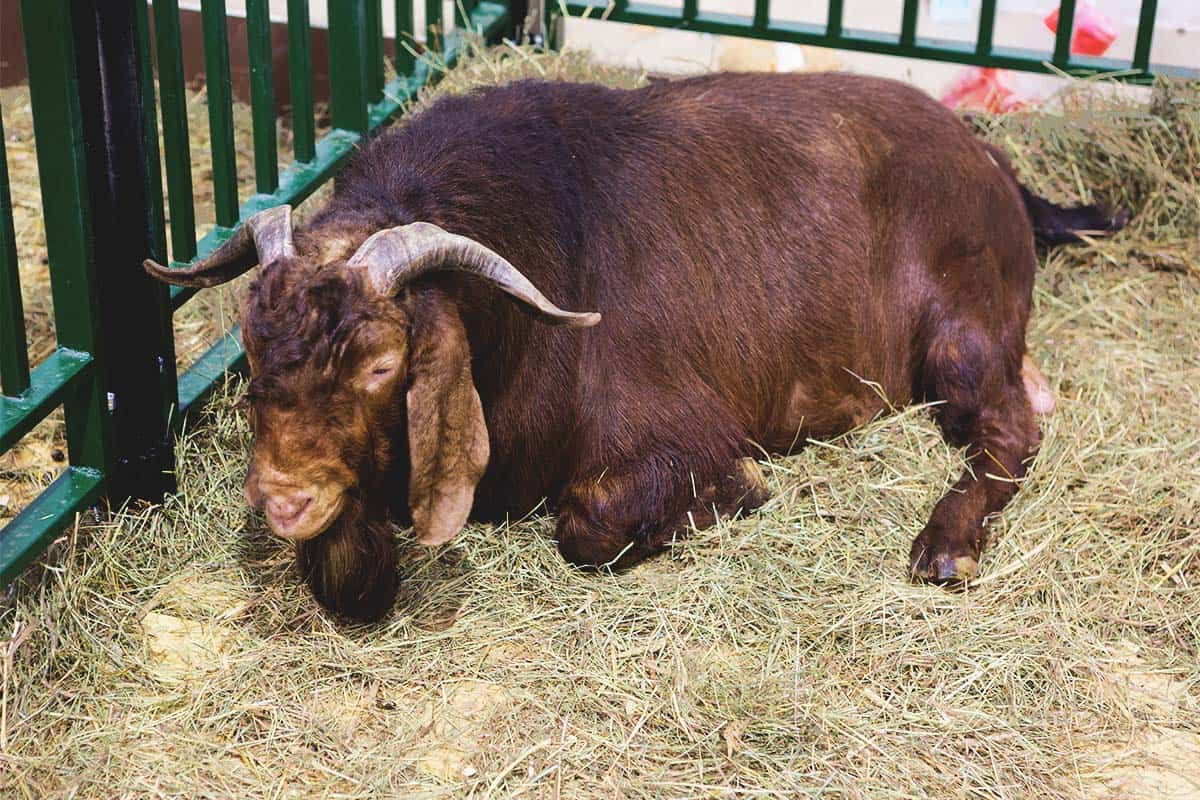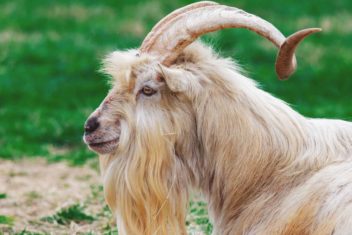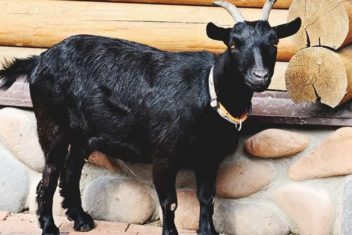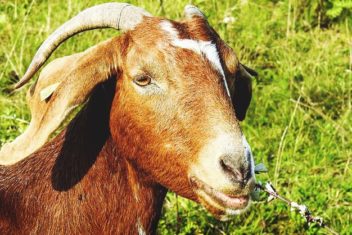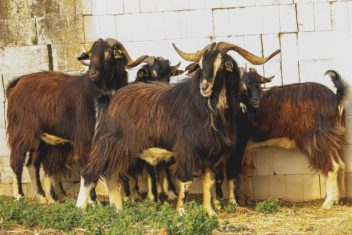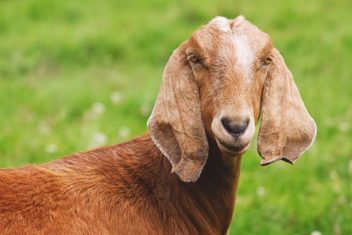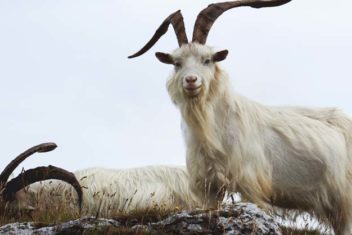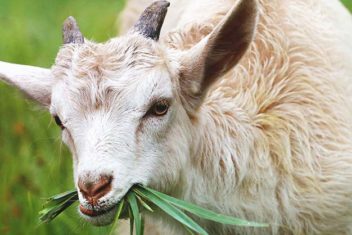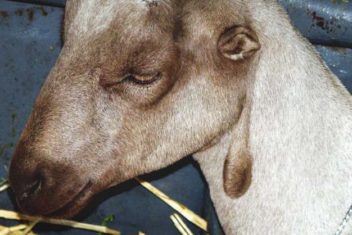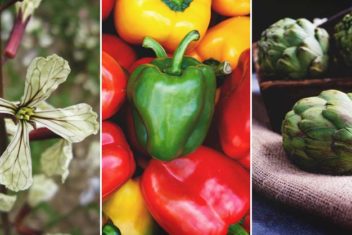Similar to the Boer goat breed, the Kalahari Red is a meat goat originating in South Africa, not-so-coincidentally, near the Kalahari Desert.
This big goat breed is a favorite amongst those who raise meat goats. The breed is hardy and easy to care for.
Kalahari Red enthusiasts will happily proclaim the disease and parasite resistance traits of this large red goat.
While the breed thrives in a variety of climates, it excels under the hot desert sun.
Ready to add a Kalahari Red to your herd? Read on to dig deeper into the details of this beautiful breed.

Breed Standards of the Kalahari Red Goat
The Kalahari Red goat is similar in stature and appearance to that of their South African neighbor the Boer goat. But despite appearances, the two breeds are not related.
The Kalahari Red is fairly new to the United States, and a registry does not currently exist.
With that being said, there are a few characteristics that you can always count on for the Kalahari Red goat. The basics are as follows:
While the Kalahari Red is a large meat breed, technically speaking it’s a medium-sized goat due to its short stature.
The impressive bucks have loose skin on their powerful necks. And bucks and does both sport horns that slope above their heads (without too much height).
Unlike the “earless” LaMancha dairy goat, the Kalahari Red has adorably floppy ears. The breed is majestic with its signature rust-red coat, which undoubtedly attributes to its namesake of the Kalahari Desert (known for its red sands).
The red pigmentation aids the goat in its ability to withstand the hot sun of the desert and arid environments.
According to Oklahoma State University’s Department of Agricultural Science, “White or light shades of red are not desirable, as they do not provide as much camouflage from predators in their native pastures.”
However, it’s not uncommon to find Kalahari Reds with white hairs, slight white patches, and lighter shades of red.
Typical Characteristics of the Kalahari Red Goat
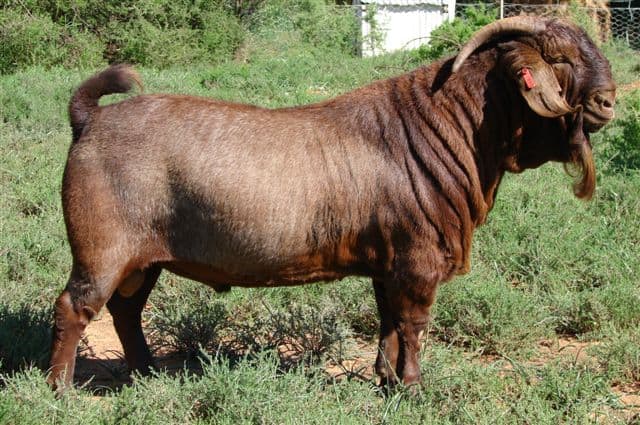
The Kalahari Red is revered for its rapid growth rate and large meat production abilities. Like the Boer and Kiko goats, the Kalahari Red is growing in popularity throughout the United States for its desirable characteristics, which include the following:
1. Utility and Production
For now, the Kalahari Red’s main purpose is that of a meat goat. However, it’s often crossed with other breeds (meat or dairy) to exemplify the desirable characteristics of more than one breed.
The meat of the Kalahari Red is said to be the most tender of the meat goat breeds.
2. Hardiness
The Kalahari Red goat is among the hardiest of breeds, as is typical of meat breeds. It is said that this breed is of the easiest to raise organically due to the breeds’ resourcefulness and ability to survive on pasture.
3. Temperament
Most Kalahari Reds are kept as livestock and few have interacted with the goat as a pet. However, enthusiasts are happy to vouch for their laid-back temperaments.
4. Maternal Instincts
A favorite characteristic for those who love the Red is the breed’s mothering abilities. This breed is a fantastic mother who nurtures her young and rarely neglects them…making less work for the farmer.
5. Long Range Foragers
Considering the origin climate of the Kalahari Red, it’s easy to see why the breed is resourceful and intrepid. These goats have evolved to travel long distances to find food, and forage for grasses, brush, legumes, and water.
6. Disease Resistant
Without getting too excited, consider this breed one of the hardiest goat breeds. While they can get parasites and diseases, their feral-ness is still a part of them. Which means they can handle whatever comes their way.
Breeding Kalahari Red Goats
Another feather in the hat of Kalahari Red breeders is the fact that this breed can breed!
Similar to the Boer goat, the Kalahari Red is polyestrous, meaning does can be bred year-round.
Does can have up to 3 kiddings every two years and will often have twins or triplets. Commercial goat farms love the Red because they possess similar mothering abilities of the Kiko goat. In other words, they don’t require much assistance during and after labor.
How to Care for Kalahari Reds
1. Feeding Kalahari Reds
Like most goat breeds, Reds prefer to browse and forage. Unlike cattle, they don’t tend to graze. They are selective and seek out the best stuff first.
Most goats get their nutrition from brush, weeds, grasses, leaves, legumes, they only need supplemental feeding if the pasture is sparse and lacks variety.
2. Housing and Fencing
This breed is like any other goat. They love to jump, crawl, and squeeze through fencing and enclosures. So make sure you goat-proof any enclosure intended to keep your goats in.
As the saying goes, “If it won’t hold water, it won’t hold a goat.”
Ensure that all goats have shelter from the natural elements and a minimum of 4 ft tall fencing.
Alternative Meat Goat Breeds
Kalahari Red Goats are growing in popularity, but due to their newness, they can be hard to find. If you’re looking for something similar, you can opt for a red Boer Goat. This alternative has the same docile temperament and lovely rust color without sacrificing meat yield.
The Kalahari Red is a majestic desert breed that is said to be extremely hardy, hands-off, and beautiful to behold.
